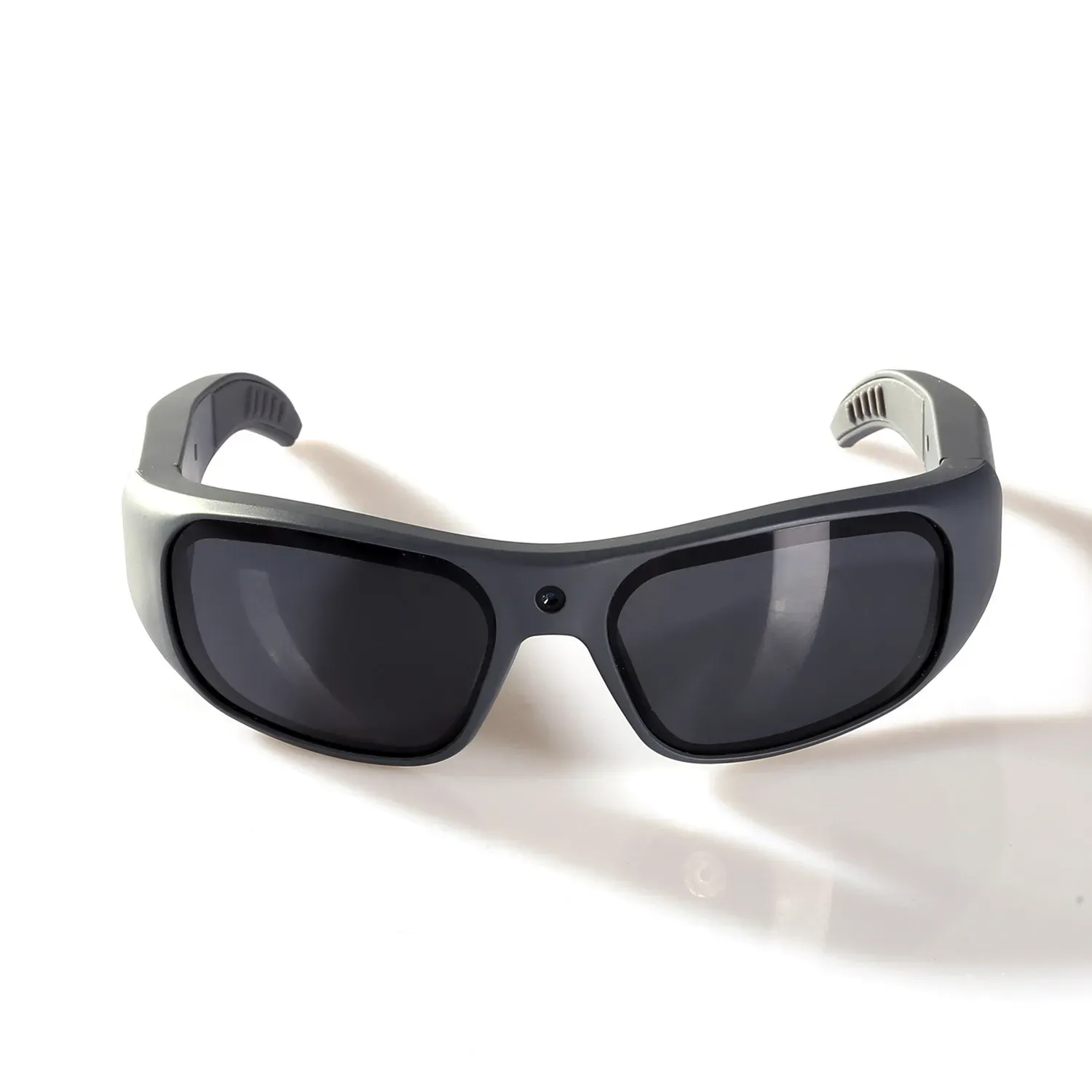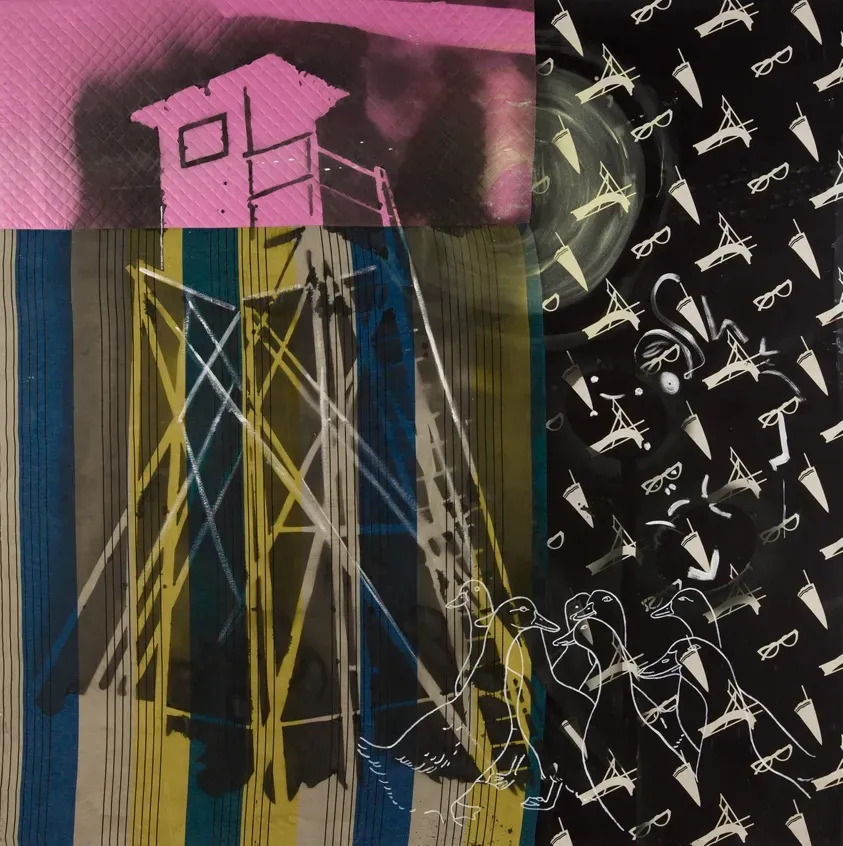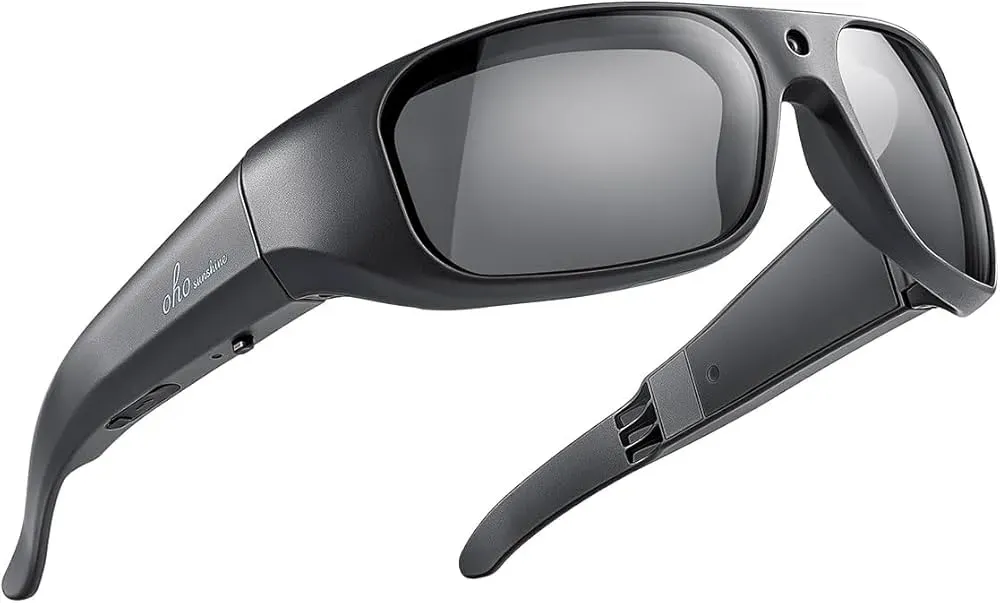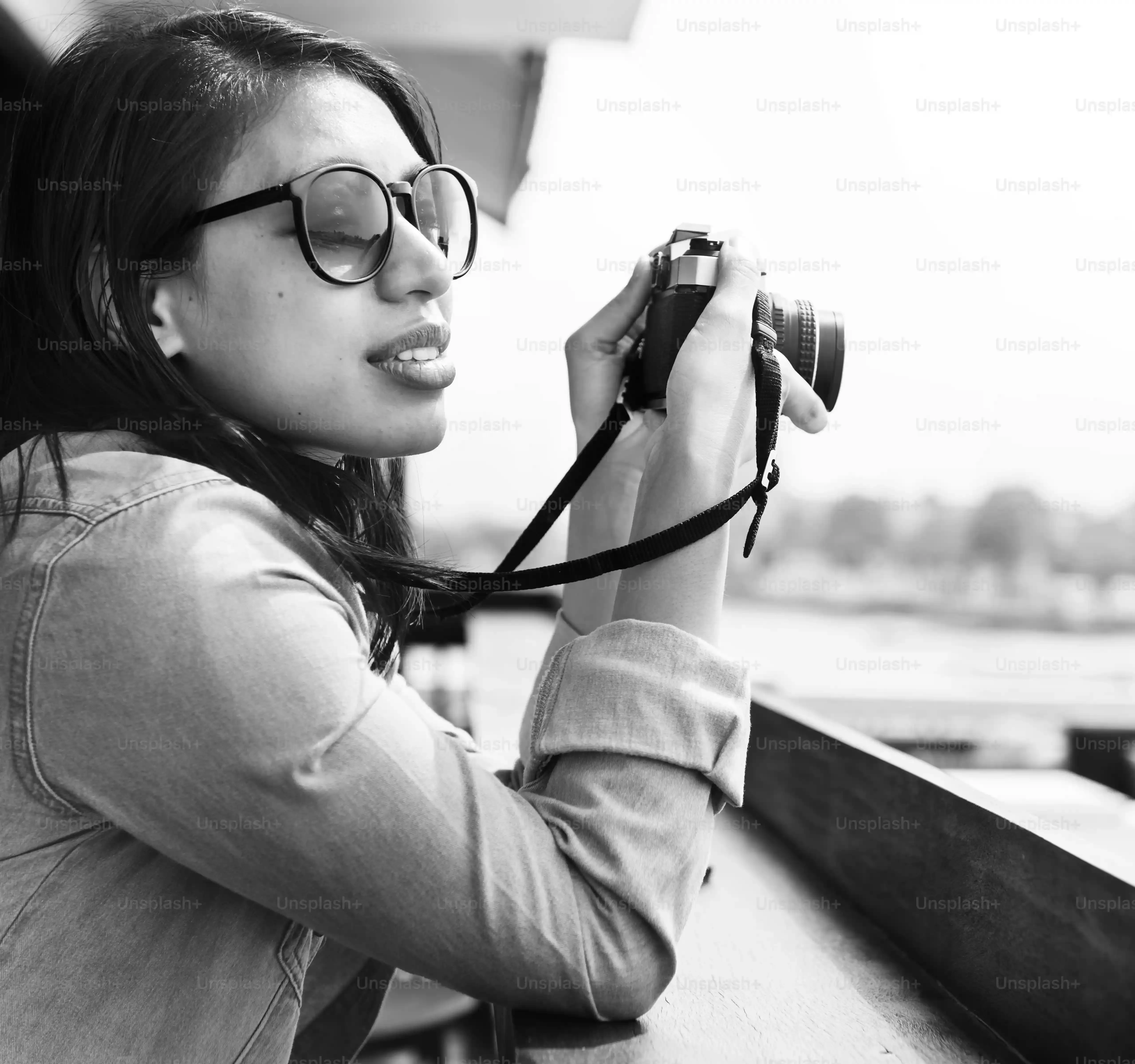Table of Contents
Ever miss capturing that perfect moment because your phone was buried in your pocket or your camera was too slow to power on? You saw it – the unexpected street performer, the hilarious pet antic, the stunning sunset while you were mid-activity – and it vanished before you could hit record. It's frustrating, right? This is precisely where the appeal of camera sunglasses comes into play. Imagine recording life as you live it, completely hands-free, without fumbling with devices. These aren't just shades to protect your eyes from the sun; they're discreet, wearable tech designed to document your world from your perspective. This article will walk you through what makes camera sunglasses a compelling gadget, exploring their key features, practical applications, and some important points you should consider before strapping a lens to your face.
The Appeal of HandsFree Recording
The Appeal of HandsFree Recording
Why Hands-Free Matters
so picture this: you're on a hike, phone tucked away safely, and a deer just casually crosses your path. Or you're biking downhill, wind in your hair, and the view is absolutely unreal. In moments like these, fumbling for your phone means missing the magic. That's the core appeal of hands-free recording. Devices like camera sunglasses let you capture these fleeting experiences exactly as you see them, without breaking your stride or risking a tumble. It's about staying present in the moment while still preserving the memory.
Think about it – your hands are free to do whatever you're doing, whether it's steering a bike, holding trekking poles, or simply enjoying a cup of coffee. The camera sees what you see, literally. This perspective is incredibly personal and authentic, offering a first-person view that a handheld camera just can't replicate. It’s less about staging a shot and more about documenting life as it unfolds around you, organically and effortlessly.
More Than Just Convenience: The Unfiltered View
Beyond the obvious convenience, hands-free recording offers an unfiltered look at your experiences. There's no barrier between you and the moment you're capturing. It feels more natural, less performative. I remember trying to film a kayaking trip once with my phone. Every paddle stroke was a struggle to keep the phone steady, and half the footage was just blurry water. With camera sunglasses, I could have just enjoyed the paddle and had a smooth, continuous recording of the scenery and the occasional splash.
This hands-free approach also opens up recording possibilities in situations where holding a camera is impractical or even unsafe. Extreme sports, intricate crafting, or even just chasing after a toddler – these are all scenarios where having your hands free is essential. The camera sunglasses become an extension of your senses, recording your visual journey without requiring any conscious effort beyond simply wearing them. It's a subtle but powerful shift in how we document our lives.
- Capture spontaneous moments easily.
- Maintain focus on your activity.
- Gain a unique first-person perspective.
- Record in situations where hands are needed.
Key Features to Look for in Camera Sunglasses
Key Features to Look for in Camera Sunglasses
Picture and Video Quality
Alright, so you're thinking about camera sunglasses. The absolute first thing to consider is the quality of the camera itself. What's the point of hands-free recording if the footage looks like it was shot on a potato from 2005? You want something that captures clear, crisp video and decent still photos. Look for specifications like resolution (1080p is pretty standard now, but 4K is better if your budget allows) and frame rate (30fps is okay, 60fps is smoother, especially for action). Sensor size and lens quality also play a huge role, though manufacturers don't always make this easy to find. Sometimes you just have to look at sample footage online. Don't get blinded by big numbers; good optics and processing matter more than just resolution hype.
Battery Life and Storage Capacity
Next up, battery life and storage. These are the silent killers of a good recording session. Nothing is more annoying than finally seeing something cool happen, hitting record on your camera sunglasses, and getting the dreaded "low battery" or "storage full" message. Check how long the battery is rated to last on a continuous recording – some might give you an hour, others maybe two or three. Think about what you'll be doing. A short walk? An hour is fine. An all-day adventure? You'll need more juice or a way to easily recharge. Similarly, storage needs to match. Is there built-in memory? Is it expandable with a microSD card? How much footage can it hold at your desired quality? A couple of hours of 1080p footage can chew through several gigabytes.
- **Resolution:** Aim for at least 1080p, ideally 4K.
- **Frame Rate:** 30fps minimum, 60fps for smoother action.
- **Battery Life:** How long does it *actually* record continuously?
- **Storage:** Built-in vs. expandable (microSD)? How much capacity?
- **Field of View:** Does it capture enough of what you see?
Durability, Comfort, and Connectivity
Finally, let's talk about the practical stuff: how they feel on your face, how tough they are, and how you get the footage off. Camera sunglasses need to be comfortable. You'll be wearing them like regular glasses, so weight, fit, and nose bridge design are important. Are they too heavy? Do they pinch? If they're uncomfortable, you won't wear them. Durability is also key, especially if you plan on using them outdoors or during activities. Are they water-resistant? Can they handle a little dust or a minor bump? Lastly, getting your videos and photos off the glasses shouldn't be a hassle. Look for easy connectivity options like Wi-Fi for wireless transfer to a phone app, or a standard USB port for plugging into a computer. Proprietary cables are a pain in the neck.
RealWorld Uses for Camera Sunglasses
RealWorld Uses for Camera Sunglasses
Adventure and Exploration
so you've got these cool camera sunglasses. Where do you actually *use* them? The most obvious place is outdoors, doing something active. Imagine cycling down a scenic trail. You're focused on the ride, the bumps, maybe dodging a squirrel. Your hands are on the handlebars where they should be. Meanwhile, your camera sunglasses are quietly recording the entire descent, capturing the blur of trees, the changing light, the whole experience from your exact viewpoint. Same goes for hiking, rock climbing, or even just kayaking. You're fully immersed in the activity, not fiddling with a camera strap or worrying about dropping your phone in the water. It's about getting that raw, first-person footage of your adventures without interrupting them.
Everyday Life and Travel
But it's not just for adrenaline junkies. Camera sunglasses are surprisingly useful in everyday situations or when traveling. Ever tried to film a busy market or a street performance while trying to keep an eye on your bag and navigate crowds? It's a juggling act. Wearing camera sunglasses lets you capture the vibrant chaos, the unexpected details, the flow of people, all while your hands are free to carry your purchases or hold a map. Think about walking through a new city, visiting a museum, or just exploring a local park. You can document your visual journey naturally, capturing moments you might otherwise miss if you had to stop, pull out a camera, and frame a shot. They offer a less intrusive way to record public spaces, though you should definitely be mindful of privacy (more on that later).
- Documenting hikes, bike rides, and watersports.
- Capturing travel experiences hands-free.
- Recording street scenes and events subtly.
- Creating unique first-person vlogs or tutorials.
- Monitoring activities where hands are occupied.
Practical and Niche Applications
Beyond the obvious, camera sunglasses pop up in some pretty interesting places. For folks who do instructional videos, say woodworking or intricate crafts, wearing camera sunglasses gives viewers a perfect over-the-shoulder perspective of the work being done. Mechanics working on an engine, chefs demonstrating a tricky technique – anyone whose hands are central to their process can benefit from this viewpoint. They've even been used for things like mystery shopping or quick visual site inspections. While not professional surveillance gear, they offer a discreet way to document observations. Just remember, while sunglasshub.org offers a wide range of eyewear, including some tech options, the specific capabilities and legal uses of camera sunglasses vary wildly depending on the model and location.
Navigating the World of Camera Sunglasses: Privacy and Legality
Navigating the World of Camera Sunglasses: Privacy and Legality
Who's Watching Who? The Ethics of Recording
so you've got your camera sunglasses, you're ready to capture the world hands-free. But hold up a second. Just because you *can* record doesn't always mean you *should*. The biggest hurdle with camera sunglasses, and really any wearable camera, is privacy. People generally don't appreciate being filmed without their knowledge or consent. Imagine someone walking around your neighborhood or workplace, subtly recording everything you do and say. Feels a bit creepy, right? Using these devices ethically means being incredibly mindful of who you's around and what you're recording. It's not just about avoiding trouble; it's about respecting other people's space and expectation of privacy. A quick glance or a nod might be necessary in some situations, even if the glasses are designed to be discreet.
The Legal Minefield: Consent and Public Spaces
Beyond ethics, there are actual laws to consider. Recording laws vary wildly depending on where you are – state by state, country by country. Many places have "one-party consent" laws, meaning only one person involved in a conversation needs to know it's being recorded (that person being you, if you're wearing the camera sunglasses). Others have "all-party consent," where everyone involved must agree to the recording. This usually applies more to audio recording, but video can imply audio. Public spaces are generally fair game for filming, but even there, recording someone up close or in a way that's clearly invasive can land you in hot water. Private property is a whole different ballgame; recording without permission is almost always a no-go. Ignorance of the law won't get you out of a lawsuit or a fine.
Considerations Before Recording | Why It Matters |
|---|---|
Location (Public vs. Private) | Laws differ significantly. |
Local Recording Laws (Consent) | Avoid legal penalties. |
Proximity to Individuals | Respect personal space and privacy expectations. |
Purpose of Recording | Is it genuinely for personal memory or something else? |
Responsible Usage and Avoiding Trouble
So, how do you navigate this without becoming a pariah or a defendant? Be smart about it. Use your camera sunglasses for legitimate purposes – documenting your own adventures, creating tutorials where people expect to be filmed, or capturing scenery where individuals are incidental to the shot. Avoid wearing them and recording continuously in sensitive locations like gyms, restrooms, or private businesses that prohibit filming. If you're recording in a semi-public space or interacting with people, it's often best to be upfront about the fact that you're recording. Most camera sunglasses aren't designed for covert surveillance anyway; their primary function is convenient, hands-free visual note-taking of your own experiences. Using them responsibly ensures you get the benefits without the significant drawbacks of legal trouble or, frankly, being labeled the neighborhood creep.
Stepping into the Future of Hands-Free Recording
Camera sunglasses offer a fascinating blend of convenience and capability, changing how we might choose to capture moments. They move the camera from a separate device you hold to an integrated part of your vision, allowing for spontaneous recording of events as they unfold from your literal point of view. While the technology continues to evolve, bringing better resolution and battery life, it's clear these glasses are more than a novelty. They present practical advantages for various activities, from sports to travel, provided users navigate the ethical and legal considerations responsibly. Ultimately, whether camera sunglasses become a mainstream tool depends on balancing their undeniable utility with public acceptance and thoughtful design, but they certainly represent a step towards a more seamlessly documented world.
